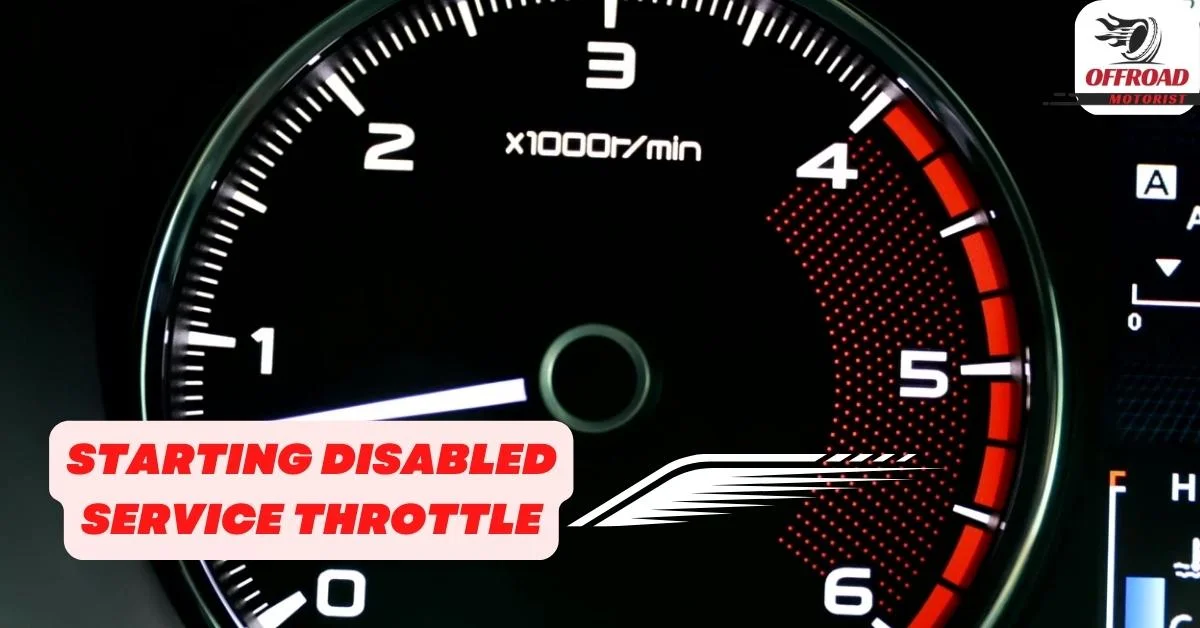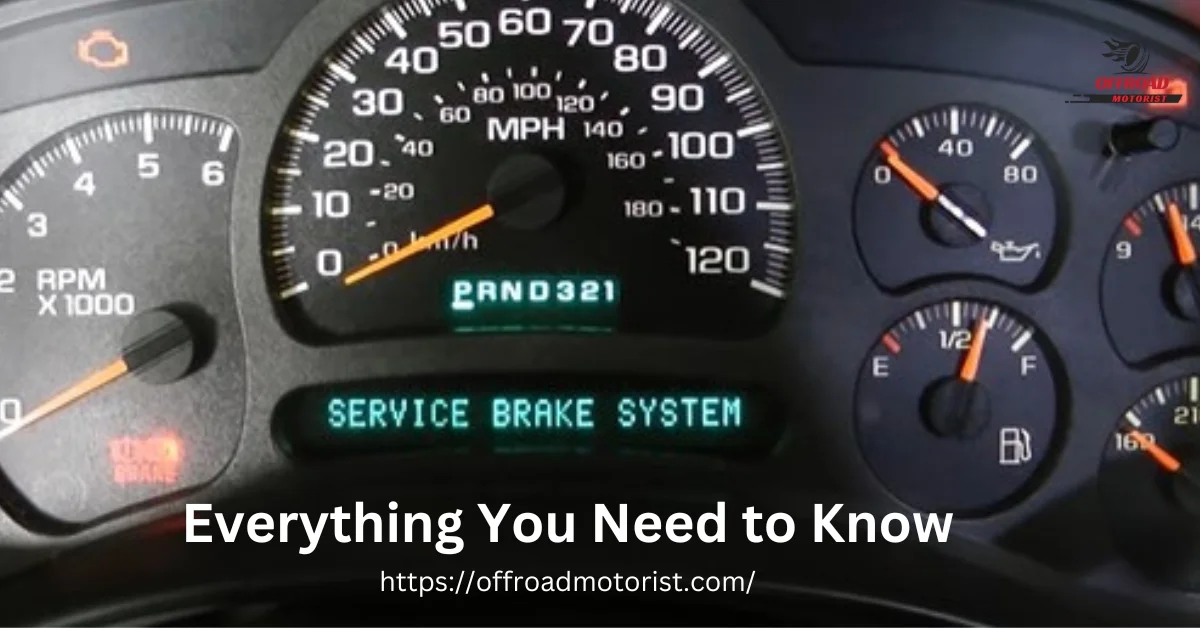Why your Chevy Truck Won’t Go Into Gear? Diagnosing and Fixing Transmission Issues
Are you experiencing issues with your Chevy truck not going into gear? You’re not alone. Many Chevy truck owners have faced this frustrating problem.
This blog post will dive deep into “Why your Chevy Truck Won’t Go Into Gear? Diagnosing and Fixing Transmission Issues”.
We will cover the common causes of this problem, the symptoms to watch out for, the process of diagnosing and fixing the issue, and ways to prevent transmission issues in the future.
By the end of this post, you will better understand why your Chevy truck won’t go into gear and how to fix it.
9 Common Causes of chevy truck Transmission Issues
Some of the most common causes of transmission issues in Chevy trucks and how these issues can lead to difficulty shifting gears or a complete lack of response from the transmission are discussed below.
Low fluid levels
Transmission fluid is essential for lubrication and cooling, and a lack of fluid can cause friction and heat buildup, leading to damage and wear on the gears and other internal components.
Worn gears
Over time, gears can become worn and lose their ability to engage properly, leading to difficulty shifting or a complete lack of response from the transmission.
Dirty filters
Dirty filters can block the flow of transmission fluid, leading to overheating and damage to the transmission.
Leaks
Transmission leaks can lead to a loss of fluid, which in turn can cause damage to the gears and other internal components.
Electrical problems
Issues with the transmission’s control module or sensors can prevent the transmission from shifting gears properly.
Clutch issues
A worn or damaged clutch can prevent the transmission from engaging, making it difficult to shift gears.
Torque converter issues
The torque converter is responsible for transferring power from the engine to the transmission, and issues with this component can lead to transmission problems. You can read our article on how to disable torque converter lock-up.
Improperly adjusted linkage
If the linkage between the transmission and the shifting mechanism is not properly adjusted, it can cause difficulty in shifting gears.
Lack of maintenance
Neglecting regular maintenance can lead to a buildup of dirt and debris in the transmission, causing damage and wear on the gears and other internal components.
Common Symptoms of chevy truck faulty Transmission that leads gear issues
Signs that a Chevy truck may be experiencing transmission issues, such as slipping gears, delayed engagement, and grinding noises. Various issues can cause these symptoms, and proper diagnosis is essential for finding the root cause.
Slipping gears
If your transmission is slipping in and out of gears, it could be a sign of a problem. This can happen when the gears are worn, or the transmission fluid is low.
Delayed engagement
If there is a delay when shifting gears, it could indicate an issue with the transmission. A problem with the clutch, the linkage, or the transmission control module could cause this.
Grinding noises
Any unusual noise from the transmission, such as grinding, could indicate a problem with the gears or other internal components.
Warning light on the dashboard
Some vehicles have a warning light that illuminates when there is a problem with the transmission. If you notice a warning light on your dashboard or windshield, you may read our article on The blinking red light on the windshield.
Rough shifting
If the gears are hard to shift or the transmission jerks when shifting, it may be a sign of a problem.
Leaking fluid
If you notice a puddle of red or brown fluid under your vehicle, it could indicate a leak in the transmission.
Overheating
Overheating can cause damage to the transmission and make it difficult to shift gears.
Lack of response
If the transmission doesn’t engage or respond, it could indicate a major problem with the transmission, and it needs to be seen by a professional as soon as possible.
Diagnosing Transmission Issues on chevy truck
Diagnosing transmission issues in a Chevy truck, such as checking fluid levels, inspecting the transmission for wear and tear, and performing a road test, can be complex and difficult to diagnose without the proper tools and expertise.
Checking fluid levels
The first step in diagnosing transmission issues is to check the fluid levels. Find a qualified mechanic to check the transmission fluid’s level, color, and smell to determine if it is low or if there are any other issues.
Road test
A road test can help identify transmission problems, such as slipping gears or delayed engagement. Test drive the vehicle and listen for unusual sounds or vibrations.
Inspection of the transmission
Inspect the transmission for wear and tear, such as worn gears or damaged internal components. You may also look for leaks or other signs of damage.
Scanning for codes
Use a diagnostic scanner to read the codes stored in the transmission control module. These codes can help to identify the specific problem with the transmission.
Pressure testing
Perform a pressure test to check the transmission’s internal components’ condition and overall performance.
Specialized Tools
Use specialized tools and equipment to diagnose the transmission problem. To check the transmission, you may use a stethoscope, a transmission jack, or a transmission stand.
Note: Proper diagnosis is essential for finding the root cause of the transmission issues. It’s important to take the truck to a qualified professional for diagnosis, as transmission issues are complex and difficult to diagnose without the proper tools and expertise.
Fixing Transmission Issues on chevy truck
Chevy trucks’ most common solutions for transmission issues include replacing worn parts, flushing the transmission, and adjusting the shift linkage. The specific solution will depend on the diagnosis, and it’s important to have help from a professional mechanic.
Replacing worn parts
If the transmission has worn or damaged parts, such as gears or bearings, they will need to be replaced. Remove the transmission and replace the worn parts.
Flushing the transmission
If the transmission is dirty or contaminated, a transmission flush may be necessary to clean it. Remove the old fluid and replace it with new, clean fluid.
Adjusting the shift linkage
If the linkage between the transmission and the shifting mechanism is not properly adjusted, it can cause difficulty in shifting gears. Adjust the linkage to ensure proper operation.
Rebuilding or replacing the transmission
Sometimes, the transmission may be beyond repair and need to be rebuilt or replaced. A qualified mechanic can provide a recommendation for solving this issue.
Updating software
The problem may be caused by outdated software; You can take help from a qualified mechanic to update the software to fix the issue.
Note: Use the right type of transmission fluid and parts recommended by the manufacturer. Proper maintenance and regular check-ups are essential to prevent transmission issues and keep the transmission in good working condition.
Tips for preventing Preventing Transmission Issues on chevy trucks
Following these steps, you can prevent transmission issues and emphasize preventative maintenance in keeping the transmission in good working condition.
Regularly check fluid levels
Checking and maintaining the proper transmission fluid level is important to prevent damage to the gears and other internal components.
Use the right type of transmission fluid
Using the correct type of transmission fluid, as the manufacturer recommends, can help prevent damage and prolong the life of the transmission.
Regular maintenance
Regularly scheduled maintenance, such as transmission fluid flushes and filter replacements, can help keep the transmission running smoothly.
Avoiding excessive idling
Idling for long periods can overheat the transmission and cause damage. Avoiding excessive idling can help prevent transmission issues.
Avoiding extreme temperatures
Avoiding extreme temperatures, like towing heavy loads in hot weather or driving in deep snow, can help prevent transmission damage.
Avoiding aggressive driving
Aggressive driving, such as sudden stops, hard acceleration, and high speed, can strain the transmission and cause wear and damage over time.
Watch out for Warning signs.
If you notice any warning signs, such as slipping gears, delayed engagement, or grinding noises, it’s important to have it checked by a professional as soon as possible.
Regularly check the transmission mount and cross-member
The transmission mount and cross-member hold the transmission in place. Worn or damaged mounts can cause the transmission to shift and cause damage.
Regularly check the transmission cooler
The transmission cooler is responsible for keeping the transmission fluid cool. A clogged or damaged cooler can cause the transmission to overheat and cause damage.
Keep the vehicle in good working condition
Regularly maintaining all vehicle systems, such as the engine, cooling system, and exhaust can help prevent transmission issues by keeping the vehicle in good working condition.
Cost of chevy truck Transmission Repairs
The cost of transmission repairs can vary widely depending on the severity of the issue and the type of transmission (automatic or manual).
- A simple repair, such as replacing a worn or damaged part, can cost anywhere from a few hundred dollars to a few thousand dollars.
- A more complex repair, such as rebuilding or replacing the transmission, can cost several thousand dollars or more.
- Additionally, the cost of labor will also be a factor, with the cost of a transmission repair typically being higher at a dealership compared to an independent shop.
Note: Preventative maintenance can help save on costs by reducing the likelihood of major transmission issues.
Common Misconceptions about chevy truck Transmission Issues
There are several misconceptions about transmission issues; these misconceptions can lead to unnecessary repairs and higher costs.
A transmission flush is always necessary
While a transmission flush can be beneficial in some cases, it is not always necessary. A transmission flush should only be performed if recommended by a qualified professional or as specified in the vehicle’s maintenance schedule.
Transmission problems are always caused by a lack of fluid
While low fluid levels can cause transmission problems, they are not always the cause. Other issues, such as worn gears, dirty filters, and electrical problems, can also cause transmission problems.
Transmission problems can be fixed by adding a transmission additive
While some transmission additives claim to fix transmission problems, they may need to be more effective and can even cause more damage. It’s important to consult a professional before using any transmission additive.
Automatic transmission cars don’t need maintenance
Automatic transmission cars also need regular maintenance, such as transmission fluid changes, filter changes, and transmission fluid flushes. Neglecting regular maintenance can lead to transmission issues.
Only old cars have transmission problems
Transmission problems can happen to cars of any age, new or old. Maintaining regular maintenance and checking for warning signs is important to prevent transmission issues.
Transmission problems can be fixed by simply changing the fluid
Changing the fluid is a good step; however, it doesn’t guarantee that the problem will be fixed. The problem may be caused by a worn or damaged internal component and needs to be diagnosed and fixed by a professional.
Transmission problems can be fixed with a simple tune-up
While a tune-up can help improve the vehicle’s performance, it may not fix the transmission issues. A qualified professional should diagnose and fix transmission problems.
FAQs
Transmission issues can be difficult to diagnose and fix with the right knowledge. In this session, we’ll try answering some commonly asked questions.
What could be why my truck goes into gear but not moving?
There are several potential reasons for this issue, such as a problem with the linkage between the transmission and the shifting mechanism, worn gears, or an issue with the clutch. Consult a qualified professional to diagnose the issue.
How do I use the shift lock release on my Chevy Silverado?
On most Chevy Silverados, the shift lock release is located on the console or the shifter itself. To use it, press and hold the brake pedal and release button while shifting out of the park. If you cannot locate the release button, consult your vehicle’s owner manual for more information.
Why is the shifter on my Chevy Silverado moving freely and not engaging gears?
It could be caused by a problem with the linkage between the transmission and the shifter, an issue with the shifter itself, or a problem with the transmission.
Final Thoughts
Transmission issues can be frustrating and difficult to diagnose and fix. However, by understanding the common causes, symptoms, and solutions, you can take steps to prevent and address transmission issues in your Chevy truck.
Regular maintenance, such as checking fluid levels and regularly scheduled services, can help prevent transmission issues and prolong the life of your transmission.
If you notice any warning signs or your truck isn’t shifting properly, you must take it to a qualified professional for diagnosis and repair. Remember that transmission repairs can be costly, so it’s best to catch and address any issues ASAP.


![Chevy Transfer Case Interchange Chart [Everything you need to Know] chevy transfer case interchange chart](https://offroadmotorist.com/wp-content/uploads/2023/03/chevy-transfer-case-interchange-chart-150x150.jpg)









